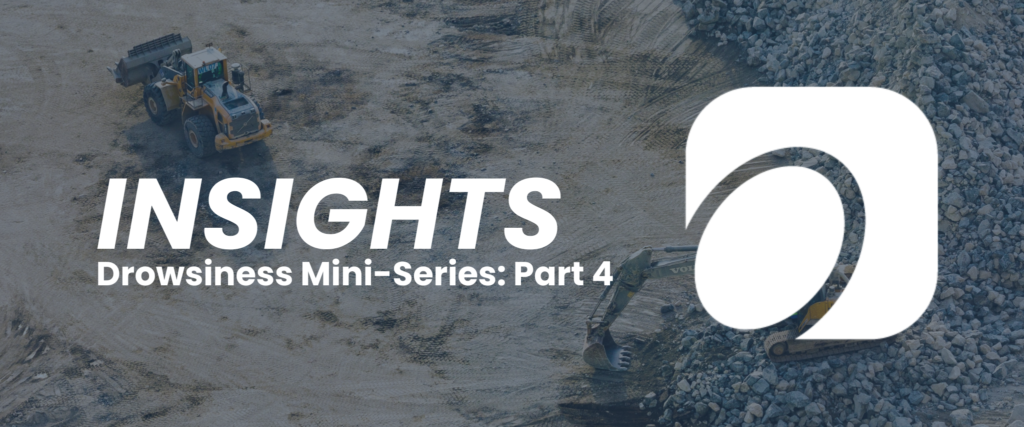
Drowsiness in the Field
In the previous episodes, we first looked at the sleep-wake cycle and the drowsiness processes we are all subject to. The last episode addressed the different types of drowsiness measures and weighed in on why one was better than the other. In this episode, we will use a case study from our commercial fleet business to describe how an objective drowsiness monitoring system works in the field.
The success of Optalert’s drowsiness detection system stems from a solid foundation of accurate measurements of objective drowsiness in drivers. The measurements are based on eyelid movements, or blepharometry, a well-established technique that has been scientifically developed and independently validated to quantify drowsiness. These measurements are collected and sent to a device that sits in the truck, usually a tablet or phone, which analyses the data to identify levels of drowsiness in a driver. The driver can continuously see their drowsiness level, and when drowsiness is detected, the device will:
- Produce an audio alarm to alert the driver;
- Produce a visual alarm by continuously displaying the driver’s drowsiness risk level (a scale of 0 to 10 with 10 being extremely drowsy) in high contrast colours;
- Transmit this information in real-time to a supervisor/monitoring team.

The chart below is an example of the data measured by our system working in the field. It shows the drowsiness level of two drivers over an 18-hour period. Their drowsiness levels were continuously monitored and recorded. The first driver (in blue) started their shift at around 9am and continued through to 7:30pm, with a short break around 3pm. Their drowsiness level stayed in a safe range throughout the shift. The second driver’s shift started shortly after 8pm. They already start at a higher level than the previous driver but still at a safe level at the beginning of their shift. As the night wore on, their drowsiness continued to rise. After midnight, they entered a stage where they were at risk and the Optalert system stepped in. Without this intervention it is easy to see that the driver’s drowsiness could have continued to rise to extremely dangerous levels and could have resulted in an accident.

- 12:15am (MN = midnight) Driver B was at medium risk of performance impairment due to early-stage drowsiness. Medium-risk audio-visual alarms were triggered.
- 12:30am – 2:00am Driver B experienced temporary relief from drowsiness (decrease in Drowsiness Score in red shaded area) and was safe to continue working.
- 2:00am Driver B was at high risk of performance impairment due to drowsiness. High-risk audio-visual alarms were triggered.
- 2:00am and 2:30am Driver B experienced temporary relief from drowsiness while looking for a safe place to take a break.
It is important to note, immediately after an alarm is triggered, whether medium- (Event 1) or high-risk (Event 3), Driver B’s drowsiness is temporarily alleviated (represented by a Drowsiness Score decrease), allowing the driver to either prolong their shift (Event 2) or find a safe place to stop (Event 4). This drop is created by an increase in arousal caused by the 90dB alarm in the cabin and the driver’s supervisor contacting them on their radio. This effect was discussed in “Episode 2: How your body regulates drowsiness”. Independent studies have shown that there are different types of countermeasures (such as our audio and visual alarms) that can be applied to briefly relieve a person’s drowsiness levels, thereby extending their safe driving time (more on this next week).
But does all this work? Yes, it does! As shown below, after our drowsiness detection system was implemented at a single site, the company reported an 84% reduction in road accidents over four years.

Imagine if we saw this level of accident reduction on our roads. It would go a long way in mitigating the estimated 100,000 drowsy-driving crashes that occur every year on American roads. So, how do we implement an objective drowsiness detection system in everyday cars? What other countermeasures are there that we could use? Tune in next time!
For more details see Dr Murray John’s publication titled “Assessment of ‘Sleepiness’ in Human Drug Trials: A New Perspective”. You can download a copy here.
Drowsiness Detection and Validation
Assess your Driver Monitoring Solutions against Optalert’s scientifically validated measures.
Upload your data


